In our last post, “When Agile is Fragile: Part One,” we discussed the need to prioritize and design more deliberate continuous learning within the rapid iterative processes of continuous delivery – and how the backlog is a good place to start baking in such practices. In this follow-up, we look at the broader culture of the team and organization as another key success factor for ensuring that UX is a true value generator for your product and enterprise.
“We must learn what customers really want, not what they say they want or what we think they want. The only way to win is to learn faster than anyone else.”
— Eric Ries, The Lean Startup
As more companies adopt practices like continuous delivery, DevOps, and other extensions of agile methodology, it’s important to remind ourselves that “fail fast” – another maxim often tagged to Ries – does not simply instruct us to deliver code at breakneck speeds.
Rather, it urges us towards a better way to learn while we do it, to fundamentally integrate the exploration of customer needs and wants with the iterative process of engineering and deployment. Continuous delivery without continuous learning leads to a number of very expensive and crippling challenges for these companies, ultimately placing their competitive advantage and customer loyalty at risk.
It is by no means, however, a simple feat to align UX design cycles with the rapid development sprints of a continuous delivery enterprise. Anyone who has sought to execute a release quickly has invariably experienced the tradeoffs and compromises necessary to meet the timeline objectives.
Data shows that scenarios like these are more the rule than the exception at large enterprise companies. Surveys conducted by Freeform Dynamics for a 2017 report by CA Technologies showed that only 14% of developers strongly agreed that they are able to tap into processes that provide end-user feedback on their requirements and app experience. Only that same small number agreed that CD best practices are followed all the time, and just 18% felt that those processes were even documented or well understood. As CA’s report noted, “processes lack discipline and customer insight…and feedback loops that include customers are still rare.”
Knowing what pitfalls to identify and avoid is half the battle. The other half is the battle itself – the ongoing effort that must be made to ensure UX best practices are maintained with diligence and rigor as the pace of delivery moves faster and faster. To do otherwise not only erodes the end user’s trust in the product, it ultimately adds costs at several points downstream.
In broad terms, research has shown that for every dollar spent resolving issues uncovered during a UX design cycle, companies that overlook this work can expect to spend $10 fixing that issue once it is in development, and $100 to fix it after it is launched.
Moreover, when the quality of UX is seen as the central problem, it spurs user dissatisfaction and reduced sales. Recently, The Career Foundry calculated that by 2020 this cost will grow to more than a trillion dollars for e-commerce brands alone, a figure based on projected online sales and research from the Baynard Institute that indicates “conversion rates for e-commerce could be improved by 35%” through better UX design.
Create a culture of learning
This cultural component – internalizing diligence around UX in the face of rapid iteration cycles – is no small matter. Some consultants and implementation firms claim that all it takes for your company to succeed with continuous delivery is a team with the right tools and a bit of time to get things rolling. If you’re reading this blog, you know the truth is hardly so simple or straightforward.
Designing an evolving product, one that delivers a steadily growing degree of value and gratification to customers, depends deeply on the user-centric culture of your organization. The success of a continuous delivery enterprise is most often at risk when the principles of continuous learning are not baked into your organization—when the process of UX research and design has not been integrated with those of rapid iterative development. But when a company successfully educates and trains its departments to align investments and priorities and incentives around the user – and more specifically, around learning from and about the user – then a culture emerges that guides individual contributions toward that ultimate goal.
Within your own organization, department, or team, look for these key attributes of a successful, user-centric culture:
- Transparency: Does your organization’s leadership communicate the role UX design plays in its strategy for creating value for customers and outgaining the competition? Do all product (and product-related) teams have a common understanding of the standard of quality and user value their UX design should deliver to customers? Do all individuals who contribute to shaping the UX share a common knowledge of the business underpinnings that inform design decisions?
- Collaboration: Today, business leaders in the CD enterprise are now making a place at the table for UX to have its own seat, on the basis that customer-centric organizations outperform those that are not. In the model of DevOps, they view success to be as much about communication and collaboration as it is about software.
Product managers can implement this idea within their own teams in a number of different ways, including cultivating egoless interactions and supportive engagement; developing discussion themes early to allow ideas to mature and incubate; explicitly aligning goals and reinforcing the accountability of each individual for delivering value to the customer. In particular, include a member of the development team when conducting customer interviews so she or he can hear directly from the end user instead of relying on notes from the UX researcher or product owner. It will also give them a stronger and more ingrained understanding of the software-experience-value equation your team is striving to solve.
- Flexibility: Continuous delivery is a proven method of building software quickly, effectively and efficiently. But you also want to build the right thing quickly. Development teams in a CD enterprise may tend to believe that up-front planning can be skipped and dealt with along the way. Instead, your team should be “agile” enough to apply different decision-making frameworks and to appreciate that up-front planning at the beginning of a particular sprint doesn’t conflict with agile methodologies (and in fact reduces the risk of UX debt down the line).
From a broader perspective, it’s important that the team and organization acknowledge that while methods such as agile, DevOps and Lean UX provide common vocabulary and practices, user needs are what drive the solution direction. True agility comes from a deliberate effort towards continuous improvement—the iterative and incremental process of optimizing the overall way you deliver software. This demands constant evaluation of your current practices against targeted results – an external-focused evaluation to balance the introspective process analysis of sprint retrospectives – and the flexibility to jettison what isn’t working and chart new ways forward.
- Empowerment: Being effectively flexible requires empowering people on your team. Does your organization permit all members of the product team to suggest and follow through on improvements to the user experience, even when the business stakeholders have signed off on the plan? This doesn’t mean team members are free to do whatever they want; everyone still has a role. But unlike traditional models where people are hired for a skill set, given a role, and then told how to execute it, they should feel empowered to innovate on how they deliver their value – including when to make changes to specs that were the basis of funding the budget. One way to empower innovation and drive problem-solving as a team is to start making the development and use of customer personas a team effort: each member has unique perspectives, insights and, needs to understand how the personas influence product development.
EQ matters
The strength of an organization’s learning culture is highly correlated to the emotional intelligence of the individuals who comprise it. UX is an incredibly people-focused field – both in terms of the need to be in touch with users’ thoughts and emotions, and the need to effectively collaborate and exchange ideas and feedback with other members of the product development team.
Increasingly, research is showing that “dream teams” are made up of people with high EQ – those who can identify and manage their emotions and the emotions of others. We have seen success when clients adjust their UX hiring strategy to place a greater focus on EQ. Taking a deeper look at EQ is one of the most powerful changes you can make to your UX team-building process. (For more on the importance of EQ in experience design, download Filter’s Guide to Building Your UX Dream Team.)
Whether you start at the organizational or individual level, this is not an easy change, and you should look to enlist outside support along the way. Be sure to choose that partner wisely, though: agile UX practices run counter to the traditional interactive agency model, where revenues depend on weighty deliverables and documentation (and the billable hours needed to create them). Instead, seek a partner who brings a proven focus and proficiency in agile UX execution, who can swiftly deliver the expertise or capacity you need to keep delivering on schedule. A partner who knows how to quickly recruit, scale and manage teams – fully outsourced, or integrated with your own. Most of all, a partner who knows the vital importance of continuous learning to the success of your continuous delivery enterprise.
Filter is helping product owners, teams and companies optimize UX practices for the rapid pace of continuous delivery, DevOps, and agile development. Discover how we can drive greater success for your business: click here to contact Filter and let us know more about your UX needs.






